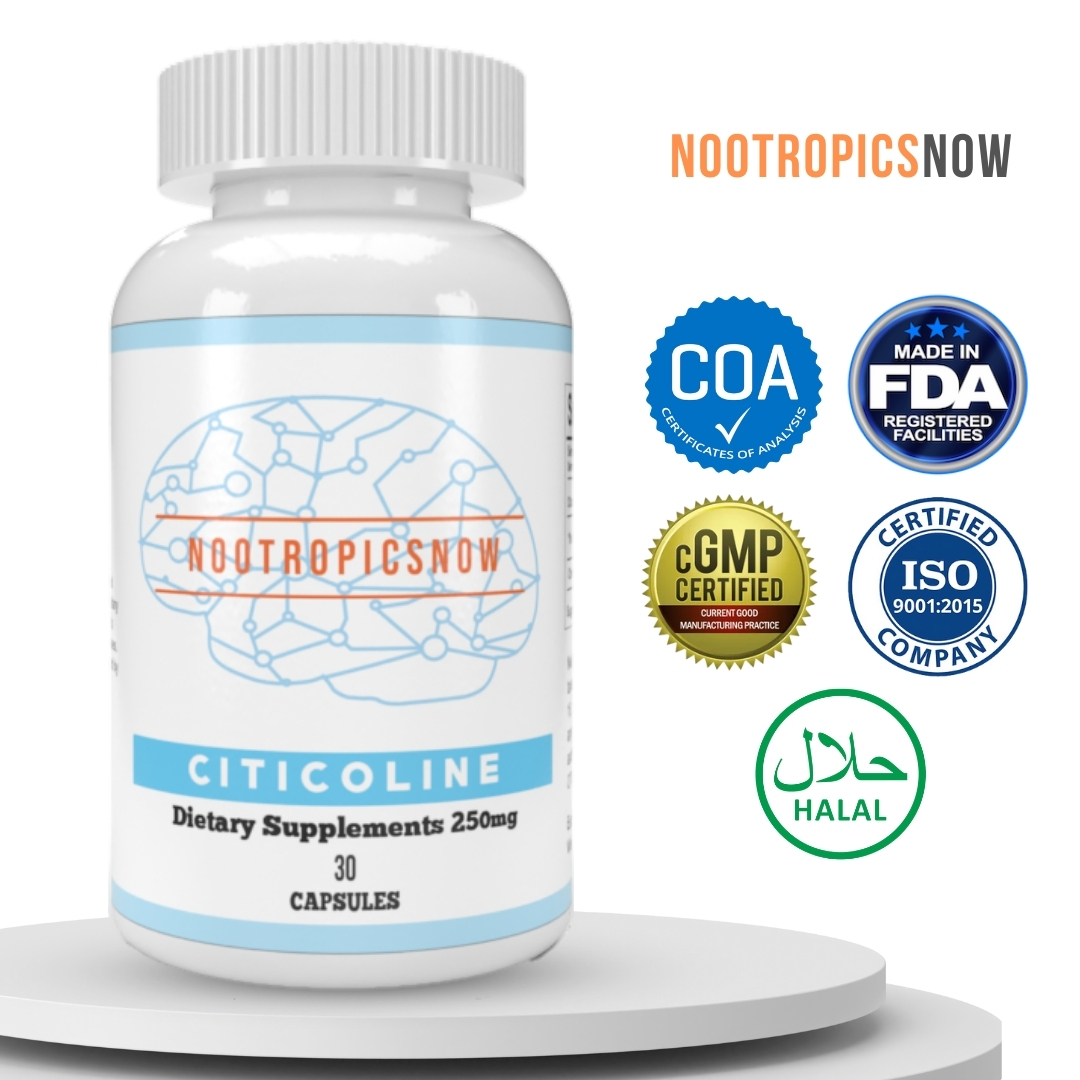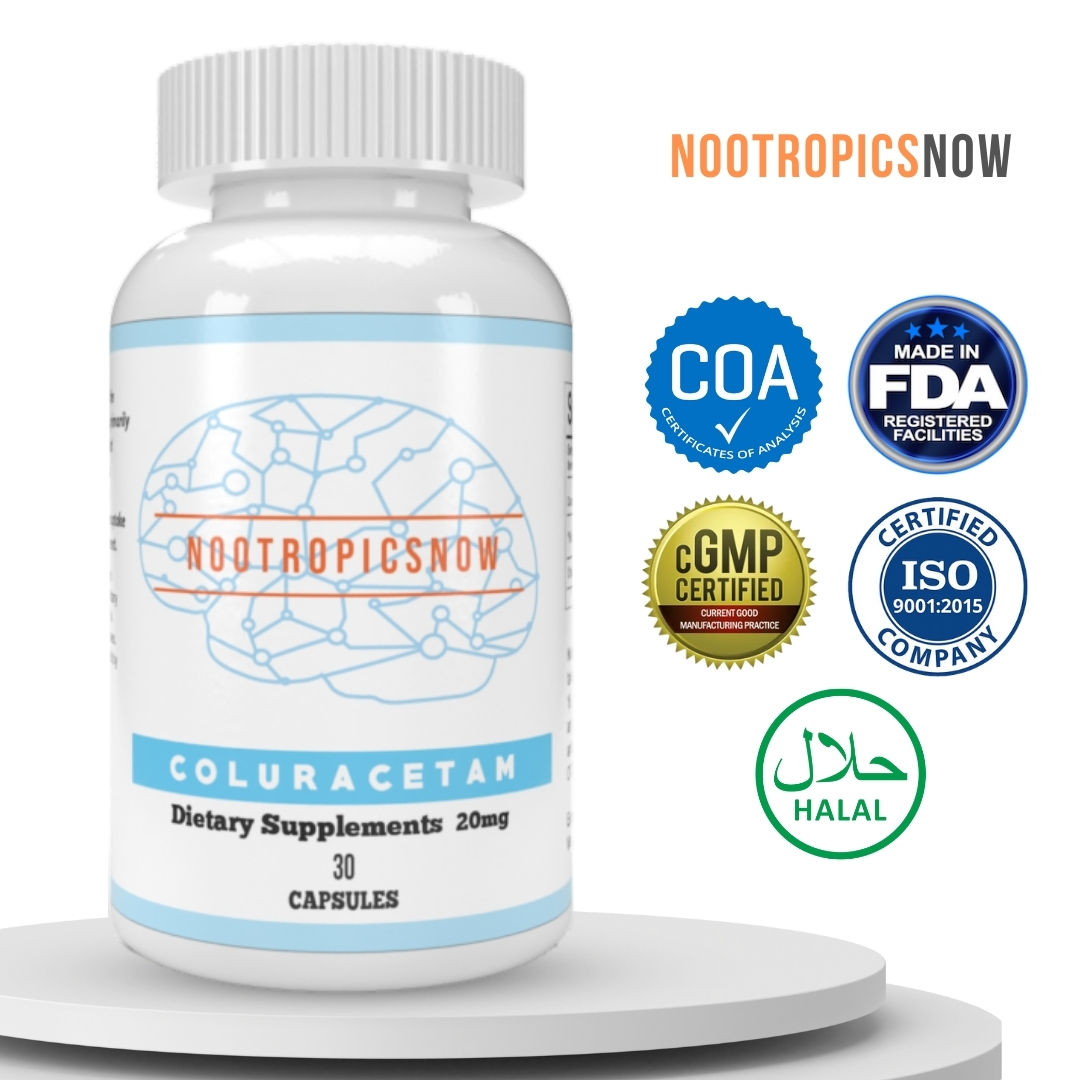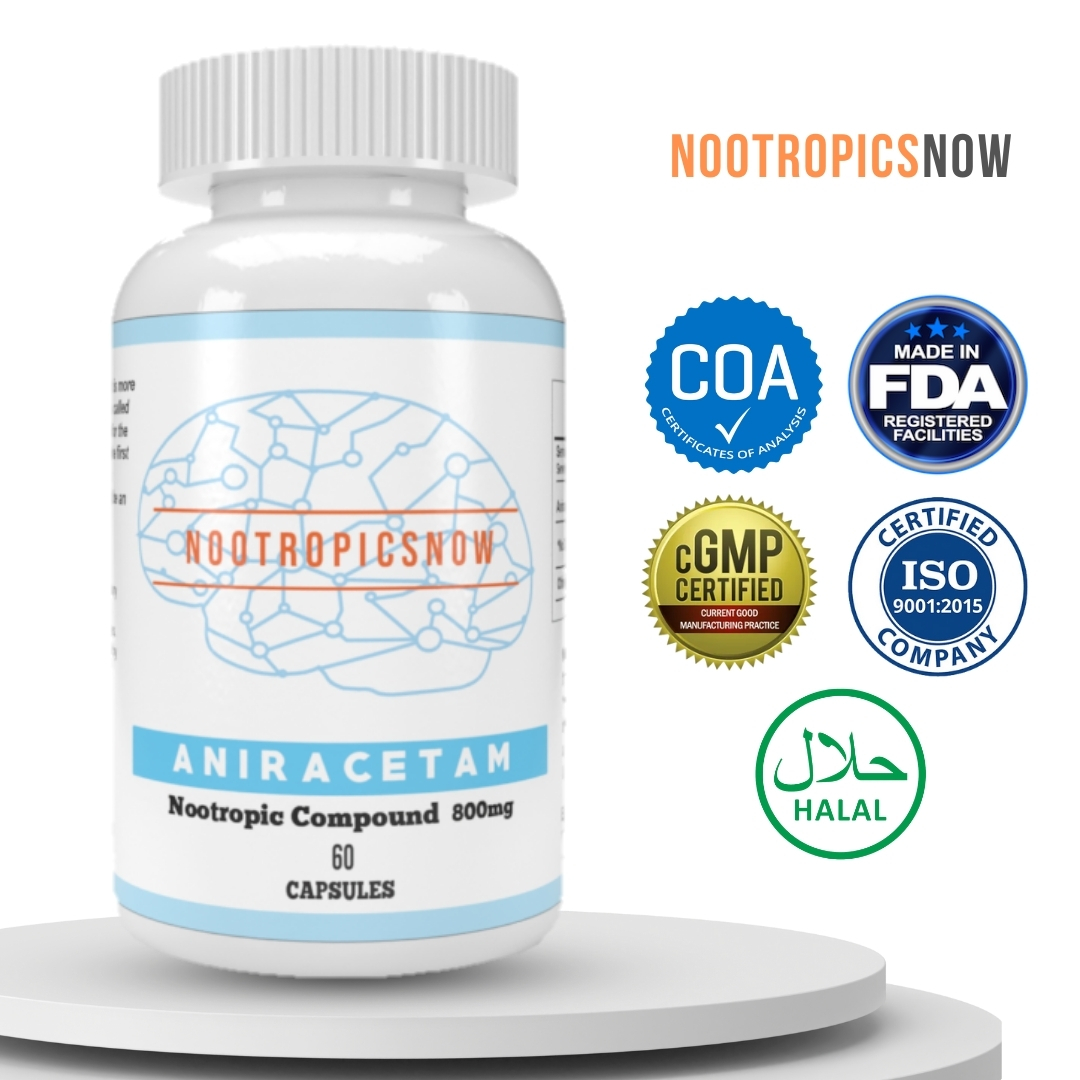Coluracetam Half-Life: What You Need to Know

`markdown
Coluracetam Half-Life: Understanding the Duration of Its Effects
Coluracetam, a synthetic nootropic belonging to the racetam family, stands out due to its unique mechanism of action involving high-affinity choline uptake (HACU). This compound has garnered significant interest for its potential cognitive enhancement properties, encompassing improvements in memory, focus, and overall mood. Just like other nootropics, understanding its pharmacokinetic properties, particularly its half-life, is crucial for grasping how it functions within the body and, subsequently, how it should be properly administered to achieve the desired results. Consequently, this exploration aims to dissect the nuances of coluracetam’s half-life, exploring its implications for dosage, administration frequency, and overall effectiveness.
Defining Half-Life: A Primer
Before diving into the specifics of coluracetam, it’s essential to establish a clear understanding of what “half-life” means in the context of pharmaceuticals and nootropics. The half-life of a substance refers to the amount of time it takes for half of the initial dose of that substance to be eliminated from the body. This parameter is crucial in determining how frequently a drug needs to be administered to maintain a consistent therapeutic effect. Substances with a shorter half-life generally require more frequent dosing, while those with a longer half-life remain active in the system for an extended period, reducing the need for frequent administration. Furthermore, the half-life influences how long a substance remains at a therapeutically relevant concentration in the blood, impacting its efficacy and duration of effects.
The Half-Life of Coluracetam: Key Data
Studies and user reports suggest that the half-life of Coluracetam is relatively short. Consequently, the general consensus places it in the range of approximately 2 to 3 hours[1][3][5]. This implies that within this timeframe, half of the initially administered coluracetam dose will be metabolized and subsequently eliminated from the body. Therefore, the short duration of coluracetam’s presence necessitates more frequent dosing to maintain stable and consistent blood concentrations for sustained cognitive effects. This pharmacokinetic characteristic distinguishes coluracetam from nootropics with longer half-lives, such as piracetam, which allows for less frequent dosing. Ultimately, the short half-life underscores the need for a strategic dosing schedule to optimize its benefits.

View Product
Unpacking the Implications of a Short Half-Life
The brief duration of coluracetam’s activity in the body has several significant implications for its use as a nootropic. Firstly, it means that a single dose of coluracetam will only provide cognitive benefits for a limited time. Therefore, to experience prolonged effects, users need to administer multiple doses throughout the day. This contrasts with nootropics that have longer half-lives, which can be taken less frequently while still maintaining a consistent level in the bloodstream. Secondly, the timing of doses becomes crucial. Since coluracetam’s effects are relatively short-lived, users need to strategically plan their dosing schedule to coincide with periods when they need the most cognitive enhancement. For example, students might take a dose before a class or study session, while professionals might take a dose before a meeting or project deadline. Thirdly, the short half-life means that coluracetam is less likely to accumulate in the body over time. This can be advantageous for individuals who are concerned about the potential for long-term side effects or drug interactions.
Dosage Recommendations for Coluracetam
While the optimal dosage of coluracetam can vary depending on individual factors such as body weight, metabolism, and sensitivity, general guidelines can help users determine a suitable starting point. Most commonly, recommended starting doses typically range from 20 mg to 80 mg per day[1]. However, this total daily dosage is most effective when divided into smaller administrations throughout the day, ensuring a consistent level of the compound in the body. For example, a user might take 20 mg in the morning, another 20 mg at midday, and a final 20 mg in the late afternoon. This approach helps to maintain a steady state of coluracetam in the bloodstream, thereby maximizing its cognitive-enhancing effects. It is important to note that these are just general recommendations, and some users may find that they need a higher or lower dosage to achieve the desired results. Therefore, starting with a low dose and gradually increasing it until the desired effects are achieved is generally recommended.
The Importance of Timing Doses Effectively
Considering the relatively short half-life of coluracetam, the timing of dosages is crucial for optimizing its cognitive-enhancing effects. Users need to strategically plan their dosing schedule to coincide with periods when they require the most cognitive support. The effects of coluracetam are typically felt relatively quickly, often within 15-30 minutes after ingestion[1]. However, these effects are also relatively short-lived, lasting only a few hours. Therefore, it is important to time doses so that the peak effects coincide with periods of intense cognitive demand.
For instance, if a student has an important exam in the afternoon, they might take a dose of coluracetam an hour or two beforehand to ensure that they are at their peak cognitive performance during the exam. Similarly, a professional with a crucial presentation might take a dose of coluracetam before the presentation to enhance their focus and mental clarity. Moreover, some users might find it beneficial to take a dose of coluracetam before engaging in activities that require creativity or problem-solving skills.
Cycling Coluracetam: Minimizing Tolerance
“Cycling” refers to the practice of periodically taking a break from a substance to prevent the body from developing a tolerance. Over time, the body may adapt to the presence of a nootropic, leading to diminished effects. To combat this, some users implement cycling strategies.
A common recommendation involves a 2-month-on, 2-week-off schedule[1]. During the “on” phase, coluracetam is taken regularly as per the dosing guidelines. The “off” phase allows the body to reset, potentially restoring sensitivity to the nootropic. It’s crucial to monitor individual responses and adjust the cycling schedule accordingly. Some users may find a shorter or longer break period more effective. Importantly, this practice is based largely on anecdotal evidence, and its effectiveness can vary significantly from person to person.
Understanding Coluracetam’s Mechanism of Action
Coluracetam’s cognitive-enhancing effects are primarily attributed to its influence on the high-affinity choline uptake (HACU) system. This system plays a crucial role in the production of acetylcholine, a neurotransmitter vital for various cognitive functions, including memory, learning, and attention.
HACU and Acetylcholine Production
HACU is responsible for transporting choline into neurons, where it is used to synthesize acetylcholine. By enhancing HACU, coluracetam increases the availability of choline for acetylcholine production. This increased acetylcholine activity is believed to contribute to the cognitive benefits associated with coluracetam use.
Potential Benefits of Coluracetam
Users have reported a range of cognitive benefits from coluracetam, including improved memory, enhanced focus, and mood elevation. These effects are likely related to the increased acetylcholine activity resulting from HACU enhancement. However, it is important to note that individual responses to coluracetam can vary, and not everyone will experience these benefits to the same degree. Moreover, the existing scientific research on coluracetam is limited, and more studies are needed to fully understand its effects and safety profile.
Safety Considerations and Potential Side Effects
While coluracetam is generally considered to be safe, potential side effects should be considered. Some users have reported mild side effects such as headaches, nausea, and anxiety. These side effects are typically mild and transient, but it is important to be aware of them before starting coluracetam.
Interactions with Other Substances
Coluracetam may interact with other drugs or supplements. Individuals taking prescription medications should consult their healthcare provider before using coluracetam. Combining coluracetam with other nootropics or stimulants may increase the risk of side effects.
Cautions and Warnings
Pregnant or breastfeeding women should avoid using coluracetam due to a lack of safety data in these populations. Individuals with underlying health conditions should consult their healthcare provider before using coluracetam. It is important to purchase coluracetam from a reputable source to ensure product quality and purity.
Coluracetam vs. Other Racetams
As a member of the racetam family, coluracetam shares some similarities with other nootropics in this class, but it also possesses unique characteristics that set it apart. Compared to other racetams, such as piracetam and aniracetam, coluracetam is often reported to have a more pronounced effect on visual perception and color enhancement. Furthermore, its primary mechanism of action, which involves enhancing high-affinity choline uptake, distinguishes it from other racetams that primarily modulate neurotransmitter receptors. Understanding these differences can help users choose the most appropriate racetam for their specific cognitive goals.
User Experiences and Anecdotal Evidence
While scientific research on coluracetam is relatively limited, many users have shared their experiences online, providing valuable anecdotal evidence about its effects. These reports often highlight improvements in memory, focus, and mood, as well as enhanced visual perception. However, it is important to note that individual responses to coluracetam can vary significantly, and not everyone will experience the same benefits. Moreover, anecdotal evidence should be interpreted with caution, as it is not a substitute for rigorous scientific research.
Sourcing and Quality Considerations
Obtaining high-quality coluracetam from a reputable source is essential for ensuring its safety and effectiveness. Look for vendors that provide third-party testing results to verify the purity and potency of their products. Be wary of vendors that offer coluracetam at extremely low prices, as this may indicate a substandard or counterfeit product. It is also important to check customer reviews and ratings before making a purchase to ensure that the vendor is reliable and trustworthy.
The Future of Coluracetam Research
Given its unique mechanism of action and potential cognitive-enhancing effects, coluracetam warrants further scientific investigation. Future research should focus on elucidating its long-term effects, identifying optimal dosing strategies, and exploring its potential therapeutic applications for cognitive disorders. Additionally, studies are needed to compare coluracetam with other nootropics and to investigate its potential interactions with other drugs and supplements.
Conclusion: Integrating Coluracetam into Your Cognitive Enhancement Strategy
The short half-life of coluracetam is a crucial factor to consider when incorporating it into a cognitive enhancement strategy. To maintain consistent cognitive benefits, users need to administer multiple doses throughout the day, strategically timing them to coincide with periods of peak cognitive demand. While anecdotal evidence suggests that coluracetam can enhance memory, focus, and mood, it is important to approach its use with caution and to be aware of potential side effects. Furthermore, it is essential to consult with a healthcare professional before starting any new supplement regimen, especially if you have underlying health conditions or are taking other medications. By understanding coluracetam’s pharmacokinetic properties and potential risks and benefits, you can make informed decisions about whether it is the right nootropic for your needs.
`
Coluracetam Half-Life: Understanding the Duration of Its Effects
Coluracetam, a synthetic nootropic compound belonging to the racetam family, has garnered significant attention for its reported cognitive-enhancing properties. Unlike many other racetams, Coluracetam’s primary mechanism of action involves enhancing high-affinity choline uptake (HACU) within neurons. Consequently, it is believed to improve cholinergic function, which plays a crucial role in memory, learning, and overall cognitive performance. Furthermore, it’s promoted for mood enhancement and focused concentration. Given its increasing popularity, understanding the pharmacokinetics of Coluracetam, particularly its half-life, is essential for maximizing its benefits and minimizing potential side effects.
Defining Half-Life in Pharmacology
Before delving into the specifics of Coluracetam’s half-life, it is crucial to define this term within the context of pharmacology. Half-life refers to the time it takes for the concentration of a drug or substance in the body to be reduced by half. It is a key pharmacokinetic parameter that influences drug dosage, frequency of administration, and the duration of its therapeutic effects. Drugs with short half-lives require more frequent administration to maintain therapeutic levels, whereas drugs with longer half-lives remain active in the body for a longer duration, requiring less frequent dosing.
Estimated Half-Life of Coluracetam
Research suggests that the half-life of Coluracetam is relatively short, generally estimated to be within the range of 2 to 3 hours. This implies that the compound is metabolized and eliminated from the body fairly rapidly. Consequently, the cognitive-enhancing effects of Coluracetam may be relatively short-lived, and maintaining consistent effects might require multiple administrations throughout the day.
Factors Influencing Half-Life
While the generally accepted range for Coluracetam’s half-life is 2-3 hours, various factors can influence this pharmacokinetic parameter. These factors include:
Practical Implications of Coluracetam’s Short Half-Life
The short half-life of Coluracetam has several practical implications for users seeking to optimize its cognitive-enhancing effects.
Dosing Frequency
To maintain a consistent level of Coluracetam in the body and sustain its cognitive benefits, frequent dosing is typically necessary. Instead of a single daily dose, users often divide their total daily dosage into two or three administrations spaced throughout the day. This strategy helps prevent fluctuations in plasma concentration and ensures a more stable cognitive enhancement.
Timing of Doses
The timing of doses is also important, especially in relation to activities requiring enhanced cognitive performance. For instance, if a user needs to focus intensely on a task in the afternoon, a dose of Coluracetam taken an hour or two beforehand can help optimize their concentration and cognitive function.
Considerations for Extended-Release Formulations
Given the limitations of Coluracetam’s short half-life, researchers and manufacturers have explored extended-release formulations to prolong its duration of action. These formulations are designed to release the drug slowly over an extended period, reducing the need for frequent dosing. However, extended-release versions of Coluracetam are not yet widely available on the market.
Optimizing Coluracetam Dosage and Administration
To maximize the cognitive-enhancing effects of Coluracetam and minimize potential side effects, users should carefully consider their dosage and administration strategy.
Recommended Dosage Range
While there is no universally agreed-upon optimal dosage for Coluracetam, most users start with a low dose and gradually increase it until they achieve the desired effects. A common starting dose is 20 mg to 40 mg, taken two or three times per day. Total daily dosages typically range from 40 mg to 80 mg.
Titration Approach
It is crucial to adopt a titration approach when starting Coluracetam. This involves beginning with a low dose and gradually increasing it over several days or weeks, while carefully monitoring for any beneficial effects or adverse reactions. This allows users to find the optimal dosage that provides the greatest cognitive enhancement with minimal side effects.
Cycling and Tolerance
Some users find that the cognitive-enhancing effects of Coluracetam diminish over time with continuous use. To combat this, many users incorporate cycling strategies, where they take Coluracetam for a period of time (e.g., several weeks or months) followed by a break. This break allows the body to resensitize to the drug, potentially restoring its cognitive benefits.
Synergistic Combinations
Coluracetam is often combined with other nootropics to enhance its cognitive effects. A popular combination is Coluracetam with a choline source, such as alpha-GPC or CDP-choline.

View Product

View Product
This combination is believed to synergistically enhance cholinergic function, leading to improved memory and learning. However, it’s crucial to research and understand potential interactions before combining different nootropics.
Safety and Side Effects
While Coluracetam is generally considered safe, it can cause side effects in some individuals. Common side effects include headaches, anxiety, insomnia, and gastrointestinal disturbances. These side effects are typically mild and transient, but they can be bothersome for some users.
Minimizing Side Effects
To minimize potential side effects, users should start with a low dose of Coluracetam and gradually increase it as tolerated. It is also important to stay hydrated and maintain a healthy diet. If side effects persist or become severe, users should discontinue Coluracetam and consult with a healthcare professional.
Contraindications and Interactions
Coluracetam is contraindicated in individuals with known hypersensitivity to the drug or any of its ingredients. It may also interact with certain medications, such as anticholinergics and cholinesterase inhibitors. Therefore, it is crucial to inform your healthcare provider about all medications and supplements you are taking before starting Coluracetam.
Research and Clinical Evidence
Although anecdotal evidence suggests that Coluracetam has cognitive-enhancing properties, there is limited clinical research to support these claims. Most of the available research is preclinical, involving animal studies. More well-designed, placebo-controlled clinical trials are needed to confirm the efficacy and safety of Coluracetam in humans.
Promising Findings
Despite the limited research, some studies have shown promising findings regarding Coluracetam’s cognitive effects. For example, a study published in the Journal of Pharmacology and Experimental Therapeutics found that Coluracetam improved memory and learning in rats with experimentally induced cognitive impairment.
Areas for Further Research
Future research should focus on investigating the specific cognitive domains that Coluracetam affects, as well as its long-term safety profile. It is also important to explore potential therapeutic applications of Coluracetam in conditions such as Alzheimer’s disease and other forms of dementia.
Legal and Regulatory Status
The legal and regulatory status of Coluracetam varies depending on the country. In many countries, Coluracetam is not approved for medical use and is sold as a research chemical or dietary supplement. In some countries, it may be subject to stricter regulations, requiring a prescription for purchase. Users should be aware of the legal status of Coluracetam in their jurisdiction before purchasing or using it.
Sourcing High-Quality Coluracetam
Given the unregulated nature of the nootropics market, it is crucial to source Coluracetam from reputable vendors.

View Product
Look for vendors that provide third-party testing of their products to ensure purity and potency. It is also important to read reviews and check the vendor’s reputation before making a purchase.
Red Flags
Be wary of vendors that make exaggerated claims about Coluracetam’s benefits or that offer it at significantly lower prices than other vendors. These could be signs of counterfeit or low-quality products.
Coluracetam in the Philippines
The availability and legality of Coluracetam in the Philippines are not explicitly defined under specific drug laws. The absence of clear regulations may classify it under supplements or research chemicals, but users should verify current legal interpretations to avoid potential issues.
Alternatives to Coluracetam
For individuals seeking cognitive enhancement, several alternatives to Coluracetam are available, including other racetams, choline supplements, and natural nootropics.
Other Racetams
Other racetams, such as piracetam, aniracetam, and oxiracetam, have also been shown to have cognitive-enhancing effects.

View Product

View Product
These compounds have different mechanisms of action and may be more suitable for some individuals than Coluracetam.
Choline Supplements
Choline supplements, such as alpha-GPC and CDP-choline, can enhance cholinergic function, improving memory and learning. These supplements are often used in combination with racetams to enhance their cognitive effects.
Natural Nootropics
Natural nootropics, such as Bacopa monnieri, Ginkgo biloba, and Lion’s Mane mushroom, have also been shown to have cognitive-enhancing effects.

View Product

View Product

View Product
These compounds are generally considered safe and well-tolerated, making them a good option for individuals seeking a more natural approach to cognitive enhancement.
Conclusion
Understanding the half-life of Coluracetam is essential for optimizing its cognitive-enhancing effects. The relatively short half-life of 2-3 hours necessitates frequent dosing throughout the day to maintain consistent effects. By carefully considering dosage, timing of doses, and potential interactions with other substances, users can maximize the benefits of Coluracetam while minimizing potential side effects. However, it is crucial to remember that more research is needed to confirm the efficacy and safety of Coluracetam in humans. Always consult with a healthcare professional before starting any new supplement regimen, especially given the limited research on Coluracetam’s long-term safety profile.

